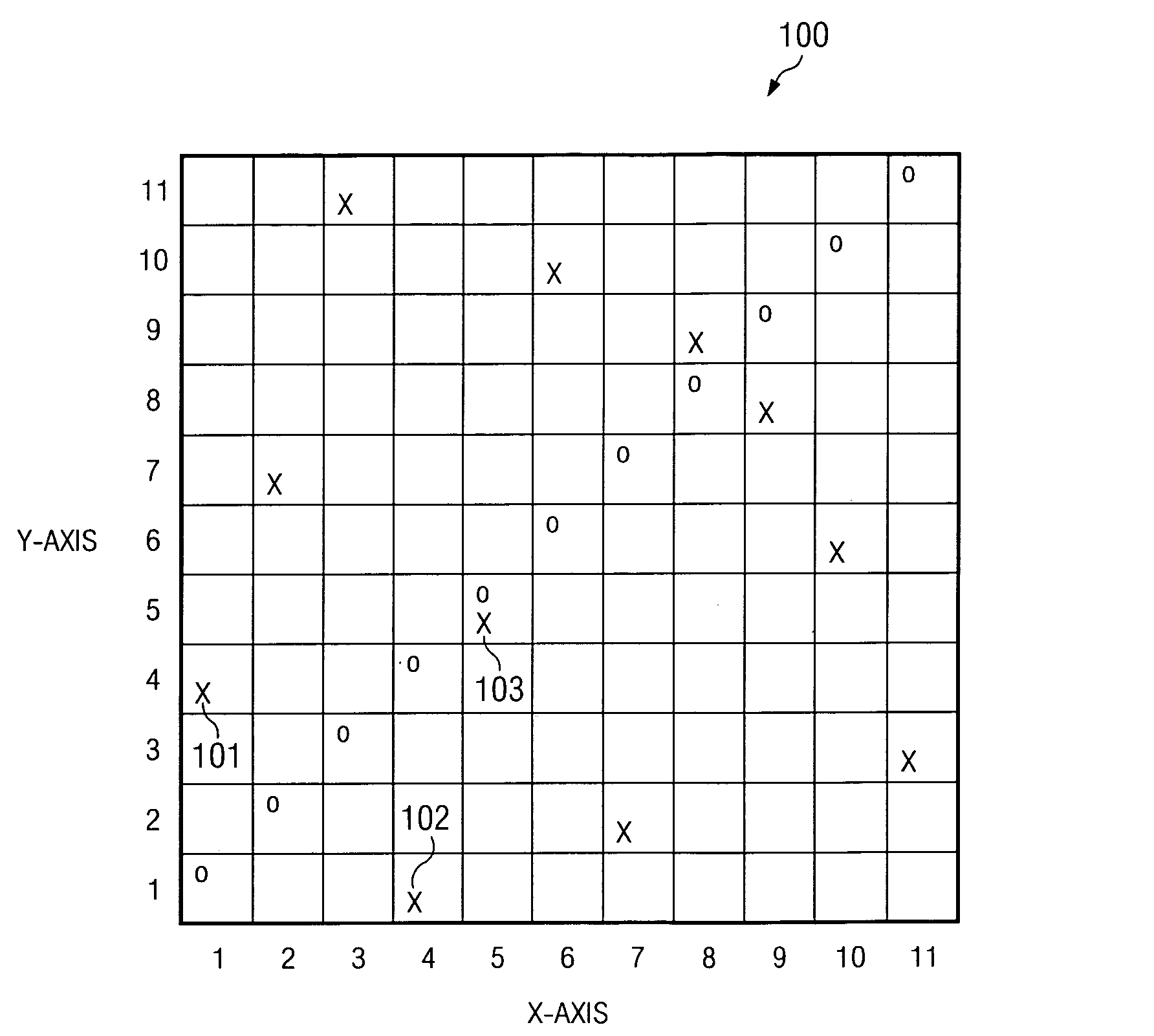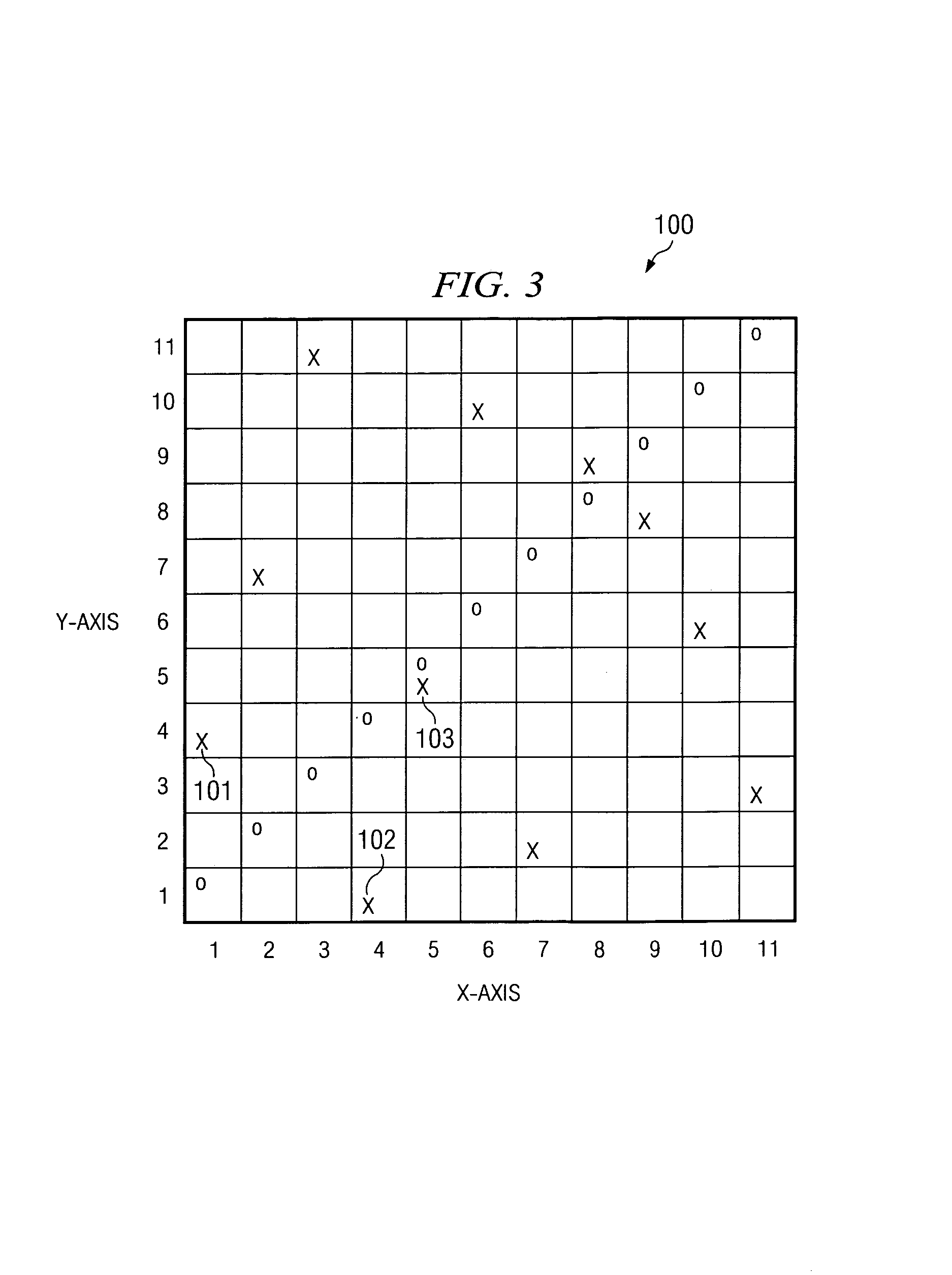Methods and apparatus for self-inverting turbo code interleaving with high separation and dispersion
a turbo code and interleaving technology, applied in the field of self-inverting interleavers/deinterleavers, can solve the problems of low dispersion of this interleaver, poor performance in practice, and the performance of block interleavers is markedly inferior in turbo coding applications, so as to reduce the impact of errors, high dispersion, and high separation
- Summary
- Abstract
- Description
- Claims
- Application Information
AI Technical Summary
Benefits of technology
Problems solved by technology
Method used
Image
Examples
Embodiment Construction
[0047]The ensuing detailed description provides exemplary embodiments only, and is not intended to limit the scope, applicability, or configuration of the invention. Rather, the ensuing detailed description of the exemplary embodiments will provide those skilled in the art with an enabling description for implementing an embodiment of the invention. It should be understood that various changes may be made in the function and arrangement of elements without departing from the spirit and scope of the invention as set forth in the appended claims.
[0048]FIG. 1 shows an example embodiment of a communication system 10 in accordance with the invention which utilizes a parallel encoding scheme. Data stream 5 is split to provide parallel inputs into the system 10. The data stream 5 is encoded at encoder 12 with a first recursive convolutional code to create a first convolutionally coded data stream. Simultaneously, the data stream 5 is interleaved at interleaver / de-interleaver 14 using a sel...
PUM
 Login to View More
Login to View More Abstract
Description
Claims
Application Information
 Login to View More
Login to View More - R&D
- Intellectual Property
- Life Sciences
- Materials
- Tech Scout
- Unparalleled Data Quality
- Higher Quality Content
- 60% Fewer Hallucinations
Browse by: Latest US Patents, China's latest patents, Technical Efficacy Thesaurus, Application Domain, Technology Topic, Popular Technical Reports.
© 2025 PatSnap. All rights reserved.Legal|Privacy policy|Modern Slavery Act Transparency Statement|Sitemap|About US| Contact US: help@patsnap.com



